The Vintage Series continues! Today is a double-feature that covers the history and decorating uses for both Baguette Baskets and Tin Ceiling Tiles.
I’ve loved the look of these vintage baskets for some time, but honestly never understood their function and it’s rather interesting! And who knew that tin ceiling tiles aren’t necessarily made of tin!
Baguette Basket – Banneton
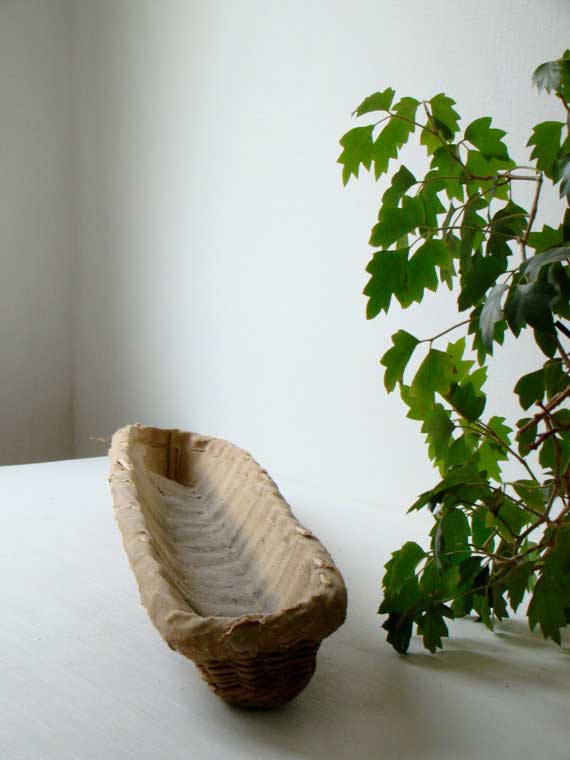
These baskets, also known as a banneton, were traditionally used by French bakers in boulangeries throughout France. Typically made from willow, they provided structure for the sourdough breads as well as wick moisture from the crust during proofing (also known as proving). Proofing is a period of “rest” so that the dough can rise before baking. The dough would be removed from the basket in order to bake and then put back in the basket to cool. Banneton often have a cloth lining sewn in with twine that helps to prevent the dough from sticking to the sides of the basket and the cloth is often left unwashed, so as to let yeast and flour collect in them, aiding the proofing process. Often made from linen, the cloth typically shows wear on the inside due to heat from the bread. These baskets were often used by bakers until they were literally ready to fall apart, so many of the true vintage ones will have a heavily worn appearance.
They are beautiful displayed as centerpieces on tables to hold dried flowers.
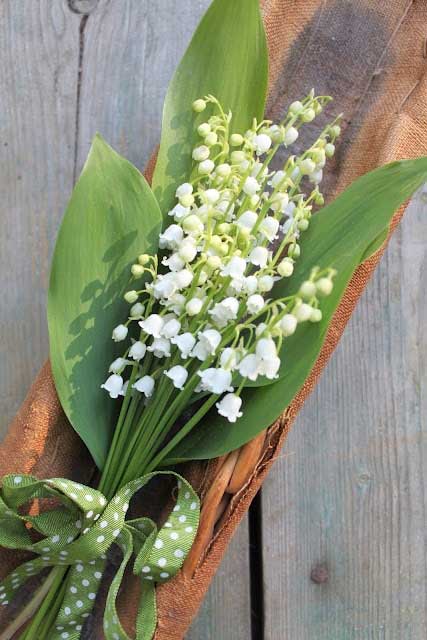

Here one has been placed in the narrow space between the tub and wall to hold soaps. Of course, you’d have to be very careful not to get it wet!
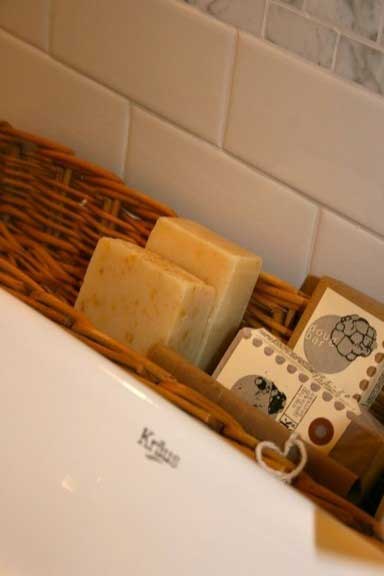
You can even use them in the kitchen for a touch of farmhouse charm!
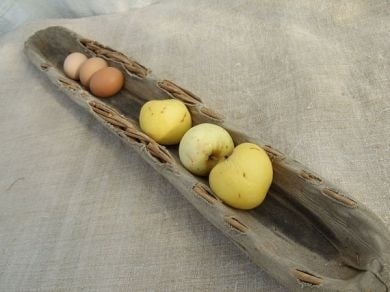
Tin Ceiling Tile

These stamped metal ceiling tiles were introduced to North America as an affordable alternative to the exquisite plasterwork used in European homes. They gained popularity in the late 1800s as Americans sought sophisticated interior design. Durable, lightweight and fireproof, tin ceilings were appealing to home and business owners alike as a functionally attractive design element that was readily available. Ironically, these tiles often aren’t made from tin, but rather a combination of iron and zinc, or steel. It is believed that the term “tin” ceiling came from Americans’ belief at that time that mass-produced metal goods were cheap and flimsy, like tin.
(Note: Vintage tiles were often painted so that they would more closely resemble hand-carved or molded plaster. Given their age, the paint can flake off quite easily so if you have a true vintage tile, it may contain lead paint. Consider sealing it with a clear, matte finish to better protect the tile and yourself!)
Tin ceiling tiles can be found in abundance at my local antique faire and I am always amazed at the creative uses for them. I have seen both large and small and at times, they’ve been cut up into smaller pieces. While I think I just want to hang one as sculptural art, there are many other uses for these vintage beauties.
Vintage ceiling tiles are still sometimes used to adorn ceilings or even as backsplash tiles, but often times, quantities of matching vintage tiles are hare to find and so are used decoratively instead.
Here, a tile that has been turned into a picture frame.
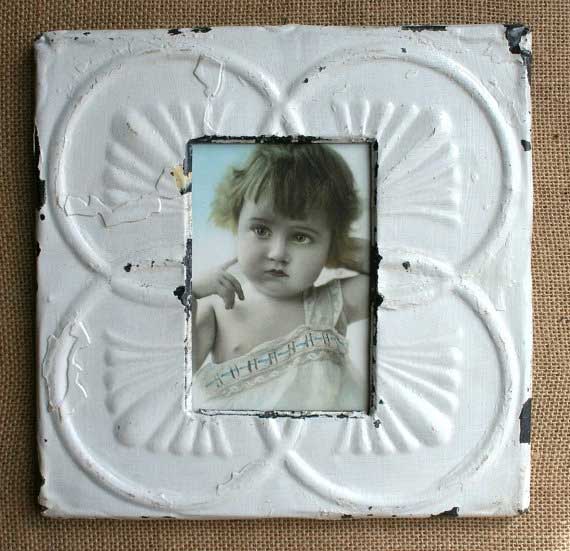
Tin ceiling tiles can be affixed to the side of a tub for vintage character.

Or even used as art with a beautiful graphic painted on it.

For more information on decorating with vintage pieces, visit my other posts:
- Decorating with Vintage Pieces – It’s a Different Language!
- Fabulous Vintage Finds
- Vintage Series: Decorating With Baby Bathtubs
- Vintage Series: Decorating with French Bottle Drying Racks
Coming up in the Vintage Series: Lavabos

Join the Community
Let’s keep in touch! Get exclusive artwork plus the latest news delivered directly to your Inbox!
